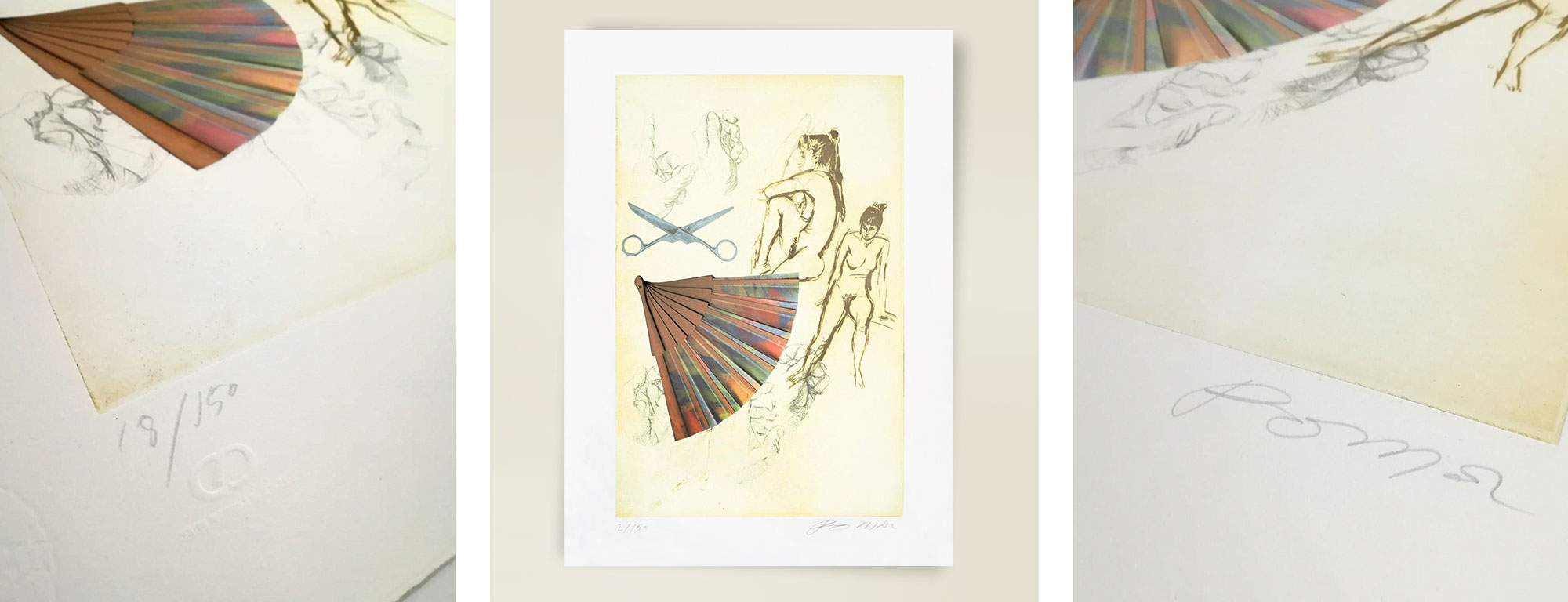Rules and procedures

Etching by Júlio Pomar
SIGNING AND NUMBERING
Original Print is numbered and signed by the artist, using a pencil. Usually the signature comes on the prints right side and the number on the left.
An edition is composed by every numbered print. The number is a fraction, being the denominator the total of the edition and the nominator the number of the print, inside the edition. For example, for a 50 print edition we use 1/50 to 50/50.
Besides the so called PA, the artists’ proofs (“Prova de Artista” in Portuguese), the edition has also the HC (“Hors Commerce”) that are editor’s property. Both of PA and HC are usually 10% of the edition.
In Portugal, the standard edition comprises 200 prints, plus 25 PA and 25 HC. The finished print, considered by the artist ready, is called BAT (in French, Bon à Tirer).
ACCURACY AND AUTHENTICITY
Every edition prints must be equal: the same paper, the same margin size, the same print quality. After finishing printing, the matrix is destroyed to avoid parallel editions without the artist’s permission. Sometimes there are colour variations in one work, turning it into several editions. These cases must be indicated for example in the catalogues reproducing the editions.
Besides editions signing and numbering, each print is stamped with CPS seal to proof its origin.
HOW TO PRESERVE FINE ART PRINTS
Original Fine Art Prints are very fragile so they must be handled very carefully and stored conveniently. Prints must be protected in a way that it shouldn’t be necessary to touch when we want to watch or transport them. Card folders, labels and stickers shouldn’t leave any mark and must be chemically stable.
Framing
Framing is the best way of protecting paper prints. It may be in glass or acrylic and a card against humidity is advised. The materials contacting the print must be acid free ones and the frame should be well closed to avoid air contamination. Do not cut the white margins of the paper and avoid the use of strong glue that may damage the print.
Temperature and humidity
The work shouldn’t be exposed to direct sun and wide range of temperatures or humidity. The weather changes may cause paper contractions and damage it permanently.